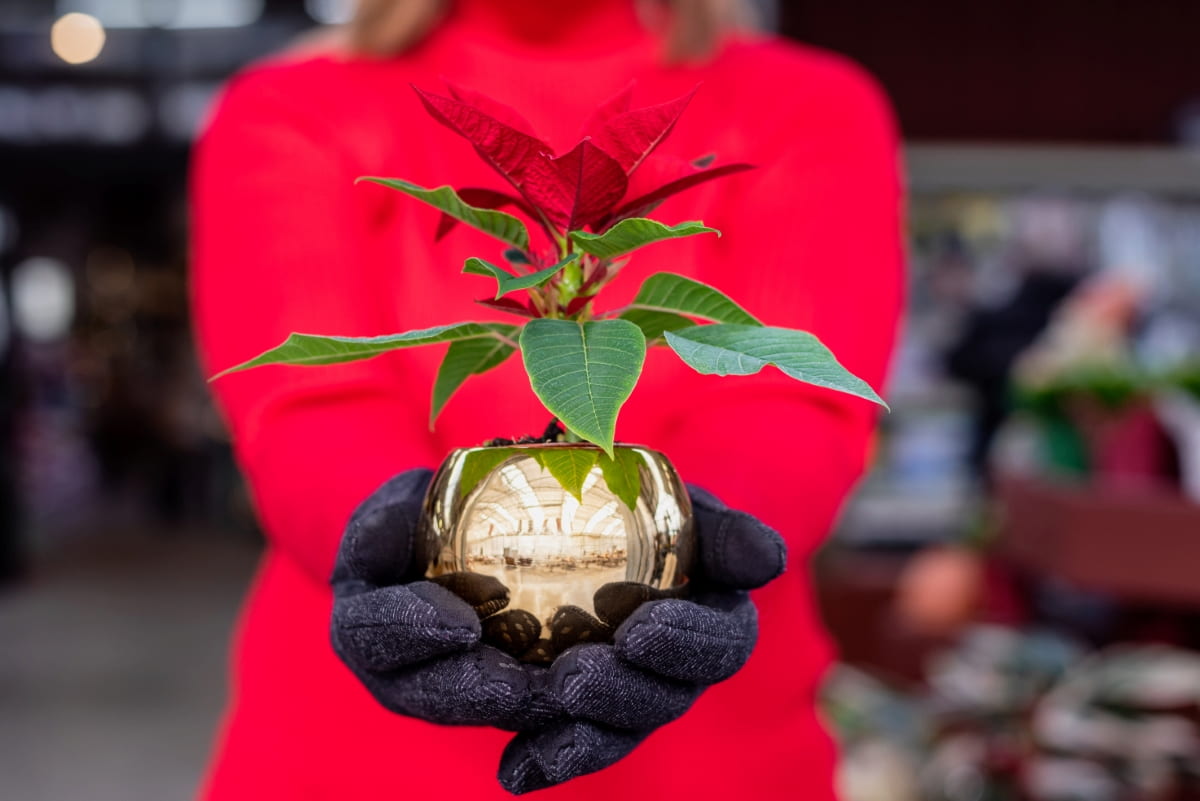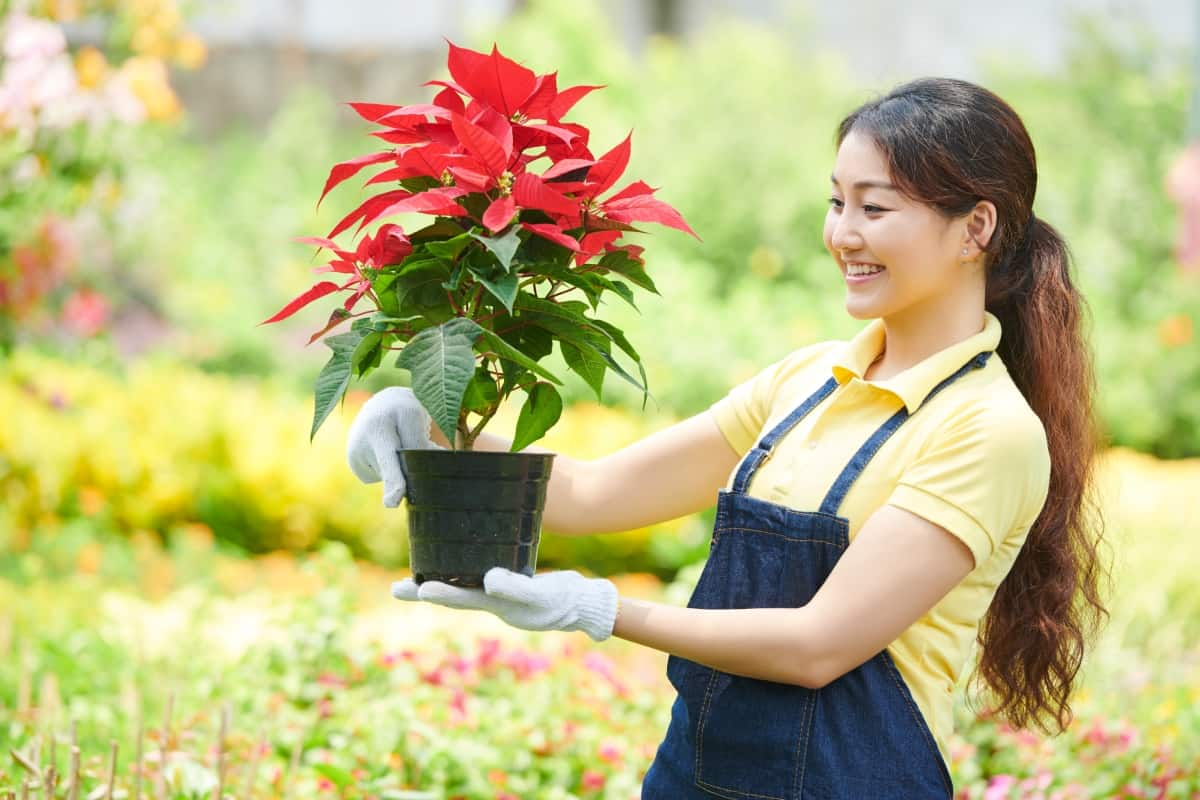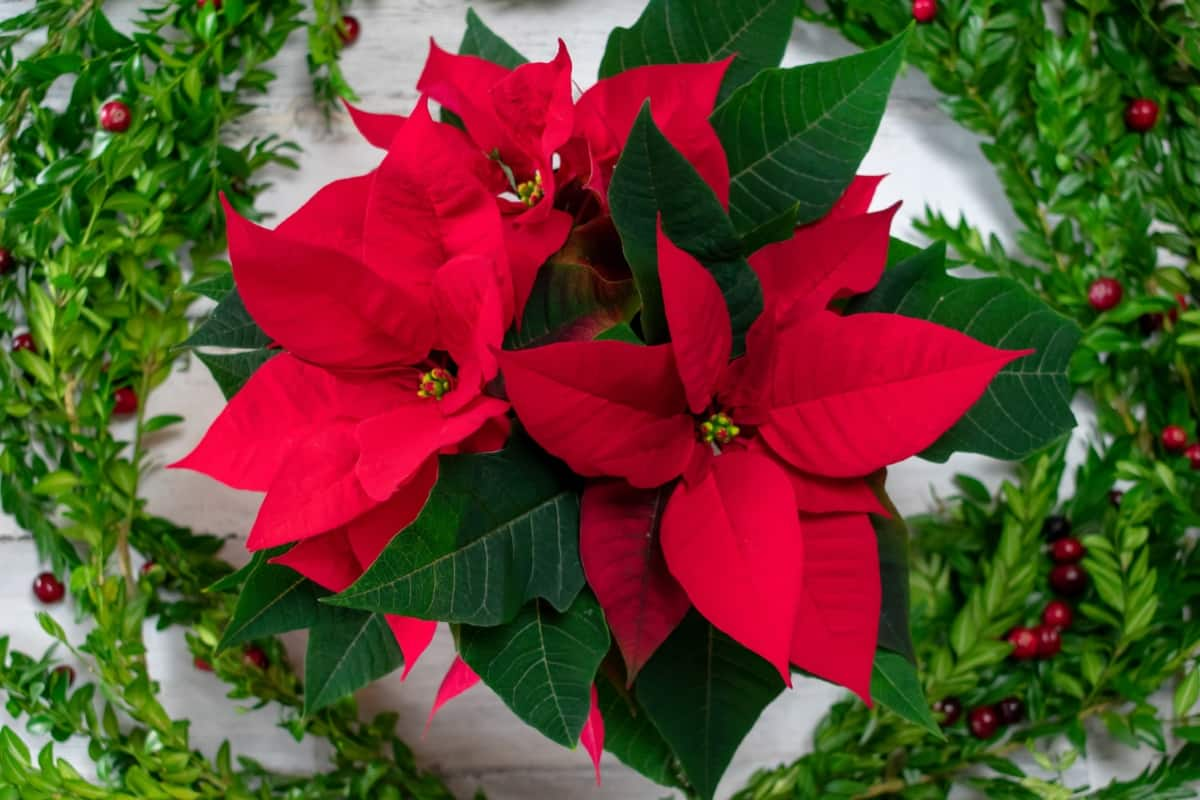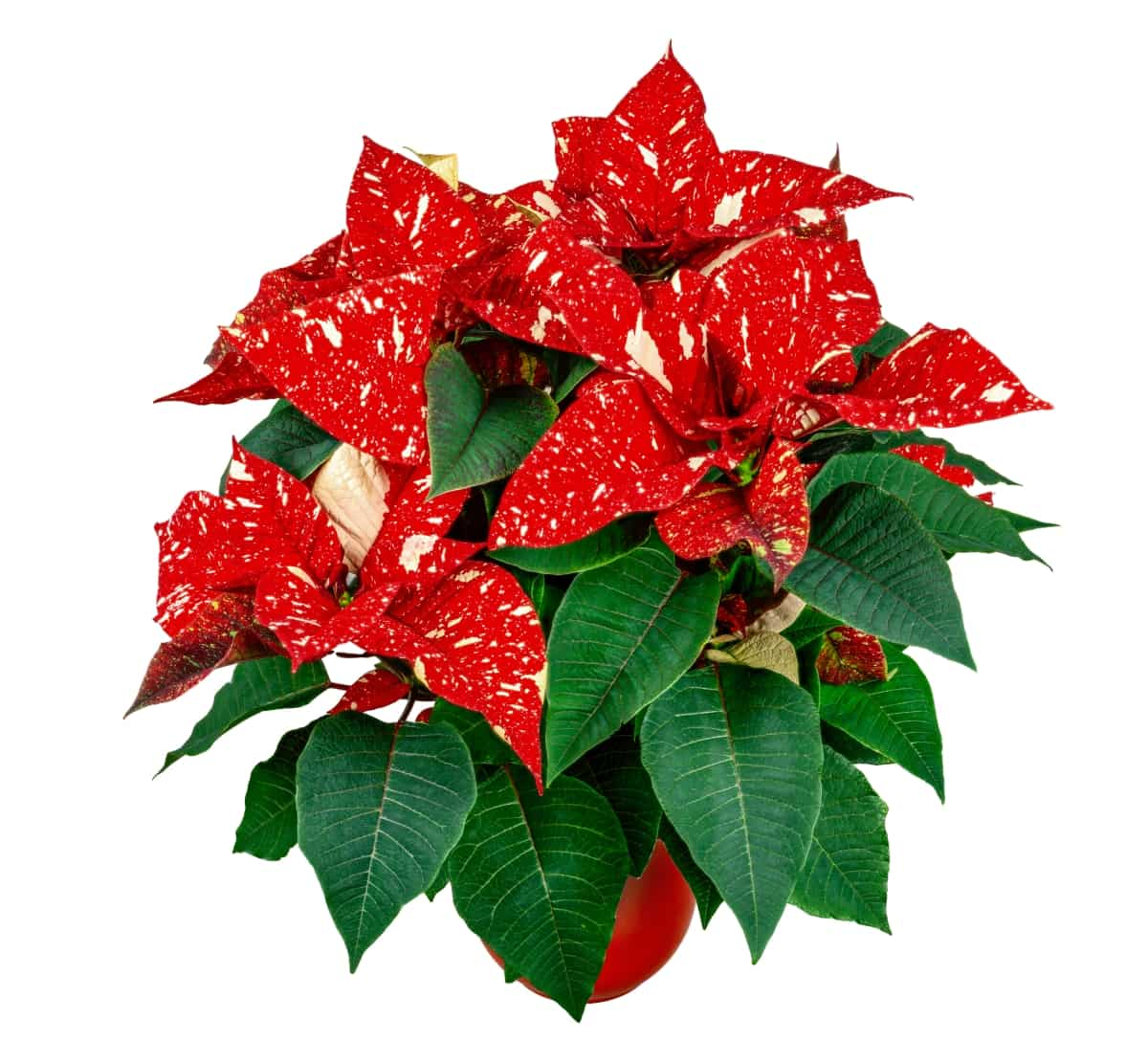Poinsettias add a festive flair to holiday décor, but maintaining their vibrant beauty requires effectively addressing common issues. Natural remedies offer gentle yet potent solutions to combat problems like leaf discoloration, wilting, and pest infestations. In this blog, we’ll explore 100% natural remedies to keep your poinsettias thriving and ensure they remain stunning centerpieces throughout the holiday season and beyond.

About Poinsettia Characteristics
Poinsettias, known scientifically as Euphorbia pulcherrima, are iconic holiday plants admired for their vibrant bracts, which are often mistaken for flowers. Native to Mexico, they thrive in warm climates and feature pointed green leaves that contrast beautifully with their colorful bracts, which can range from traditional red to pink, white, or even marbled varieties.
Understanding Poinsettia Health
- Poinsettias prefer temperatures between 60-75°F and bright, indirect sunlight.
- Overwatering can lead to root rot, while dry soil can stress the plant.
- Good air circulation and pruning dead leaves can prevent fungal and bacterial issues.
- Neem oil can be sprayed weekly to provide a protective against pests like aphids and whiteflies.
Spring & Summer Care: After the blooming season, reduce watering to allow your poinsettia to rest. As new growth emerges, consider repotting if necessary and fertilize for a nutrient boost. Mid-July is the time to prune your plant for business while maintaining consistent watering and indirect light to foster growth.
Fall Season Preparation: In October, prepare your poinsettia for its holiday debut. The plant requires 14 hours of uninterrupted darkness nightly for 8-10 weeks to set buds. Move it to a dark room or cover it each night to meet this requirement, then return it to natural light during the day.
Winter Season Care: With proper attention, your poinsettia will bloom just in time for the holidays. Keep the soil moist avoid soggy, allowing the top inch to dry before watering. Refer to additional resources for more tips on overwintering your poinsettia.
Common Issues with Poinsettia Leaves
Yellow Leaves: Overwatering or poor drainage may cause yellowing. Ensure proper drainage with water only when the top inch of soil is dry. Consider using a balanced fertilizer to address nutrient deficiencies.
Wilting Leaves: Inadequate water or excessive sunlight can cause wilting. Maintain consistent soil moisture, provide bright, indirect light for firm, healthy leaves.
Leaf Drop: Sudden temperature changes or drafts may lead to premature leaf drop. Maintain stable temperatures between 60-70°F to prevent stress-induced leaf loss.
Brown Leaf Tips: Dry air or excessive fertilizer can cause brown tips. To prevent tip burn, maintain moderate humidity and follow a suitable fertilizing schedule.
In case you missed it: Natural Remedies for Tulsi Plant Problems: 100% Effective Solutions for Home Gardeners

Poinsettia Plant Diseases
Fungal Diseases: Botrytis gray mold and root rot diseases are common fungal issues. Ensure good air circulation, avoid overwatering, and remove infected plant parts promptly. Bacterial Infections, like Curtobacterium sp., can cause water-soaked streaks and leaf spots. Preventive measures include avoiding overhead irrigation and promptly disposing of infected plants.
Viral Infections: Viruses can cause distorted or discolored foliage. Prevention through sterilized tools and pest control is crucial, as there is no cure for viral infections.
Pest Problems in Poinsettias: Whiteflies, aphids, spider mites, and mealybugs are common pests. Identification and management strategies include using traps, insecticidal soaps, or natural predators.
Environmental Stress Factors: Improper watering, inadequate lighting, extreme temperatures, and poor air circulation can stress your poinsettia. Maintaining optimal conditions ensures plant health and vitality.
Care and Maintenance Strategies: Watering techniques involve checking soil moisture and avoiding waterlogged roots. A balanced fertilizer should be applied regularly, and the poinsettia should be pruned for shape and fullness in summer. Following these strategies ensures a healthy, vibrant poinsettia throughout the year.
Preventive Care for Robust Poinsettias
- Implement good plant protection strategies to prevent pest outbreaks.
- Monitor plants for secondary pest outbreaks and pest resurgence.
- When using pesticides, choose materials that are least toxic to the user and natural enemies of pests.
Organic Management of Fungal Diseases in Poinsettias
- Improve ventilation and avoid overwatering to reduce the risk of root rot.
- Use a baking soda spray (1 tsp/qt water) to control powdery mildew.
In case you missed it: Natural Pesticides for Zinnias: 100% Effective to Kill Bugs on Zinnia Plants

Natural Remedies for Poinsettia Root Rot
- Use a well-draining soil mix and avoid standing water.
- Treat mild root rot with a hydrogen peroxide solution (1 tbsp/qt water).
Eco-Friendly Solutions to Combat Whiteflies
- Use neem oil spray to suffocate whitefly eggs and larvae.
- Install yellow sticky traps to monitor and reduce adult whitefly numbers.
- Introduce lacewings and ladybugs as biological controls for whiteflies.
Safeguarding Poinsettias from Spider Mites Naturally
- Hose down plants with water to dislodge spider mites.
- Use neem oil to suffocate the pests.
- As a last resort, insecticidal soap can effectively control a spider mite infestation.
DIY Organic Sprays for Poinsettia Pests
- Neem oil, insecticidal soap, and hydrogen peroxide can be used as organic sprays.
- Regular application of these sprays can help prevent pest infestations.
Boosting Poinsettia Immunity with Natural Fertilizer
- Monthly applications of compost tea or liquid kelp can boost nutrient levels and strengthen poinsettia immunity.
Effective Watering Techniques to Prevent Diseases
- Water until draining from the bottom, and avoid wetting the leaves.
- Water stress or overwatering can weaken plants and make them prone to issues.
Winter Care: Ensuring Poinsettia Health During Cold Months
- Place poinsettias in a bright spot away from drafts during winter.
- Water sparingly and move plants outside on warm, sunny days.
- Cut back on watering in spring to encourage re-flowering for the next holiday season.
In case you missed it: Natural Ways to Fix Common Snake Plant Problems: Exploring Causes to Solution

Embracing natural remedies offers effective solutions to address common poinsettia problems without resorting to harsh chemicals. By utilizing gentle yet powerful methods like proper watering, organic fertilization, and pest management techniques, you can ensure your poinsettias thrive while preserving their health and beauty.
- Types of Fungicides Used in Agriculture
- Common Issues in the Fruit Development Stage of Pomegranate Farming
- Fruit Development Issues in Papaya: Easy Solutions and Treatment
- Soil-Borne Diseases and How to Protect Your Plants
- Practices to Prevent Disease Spread in the Garden
- From Wilted to Thriving: How to Treat Root Rot Naturally in Houseplants
- Natural Remedies to Cure Brown Spots on Fig Tree Leaves
- Natural Solutions for Poinsettia Problems: 100% Effective Remedies
- How to Control Calla Lily Problems: Natural Remedies for Leaf and Flower Problems